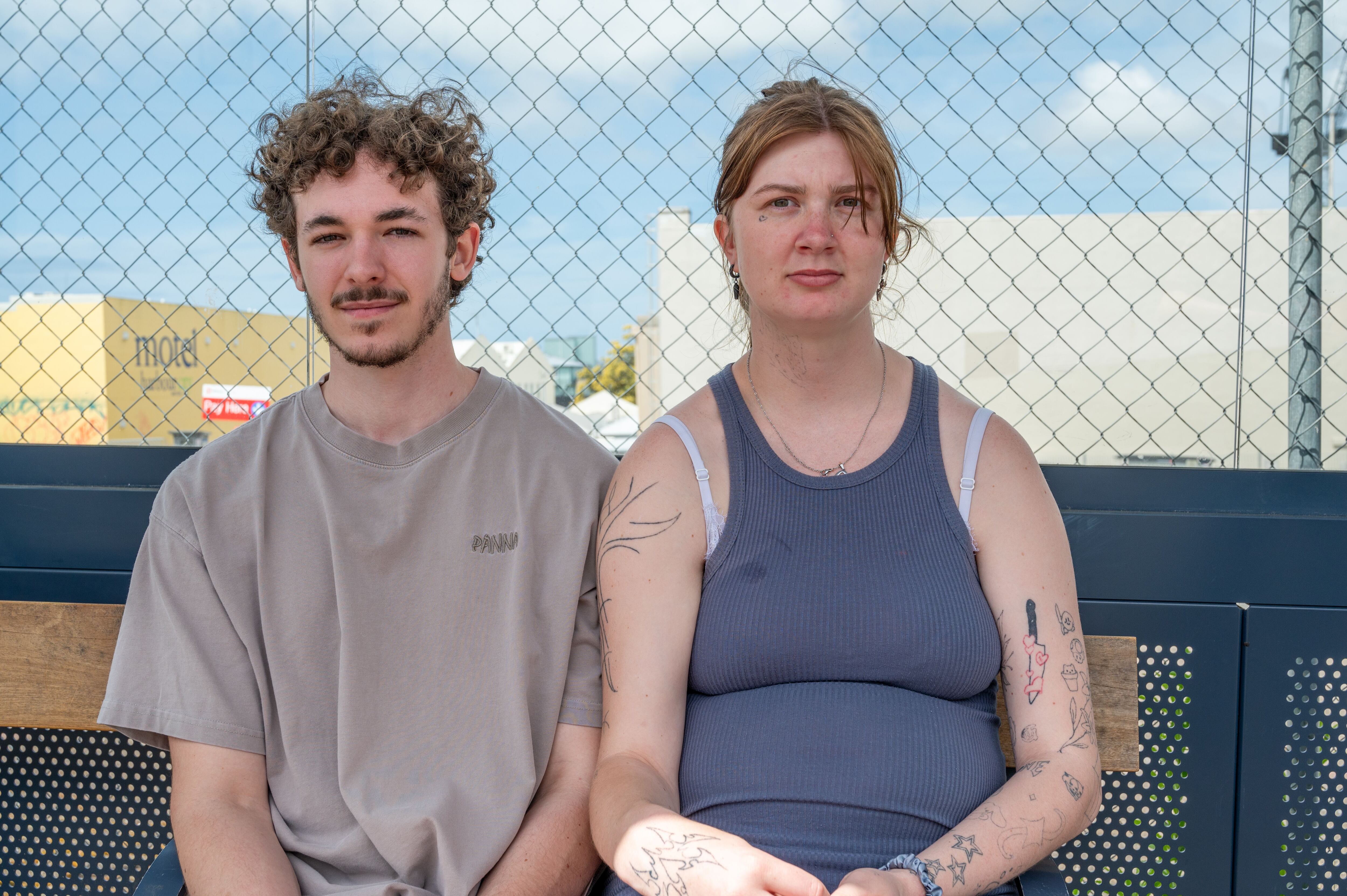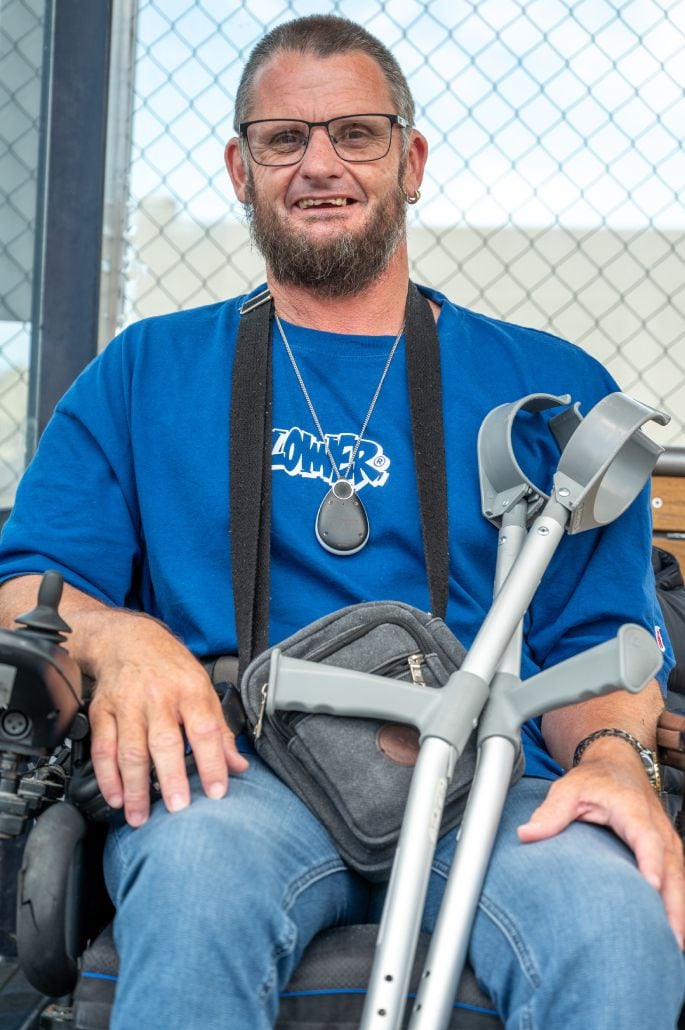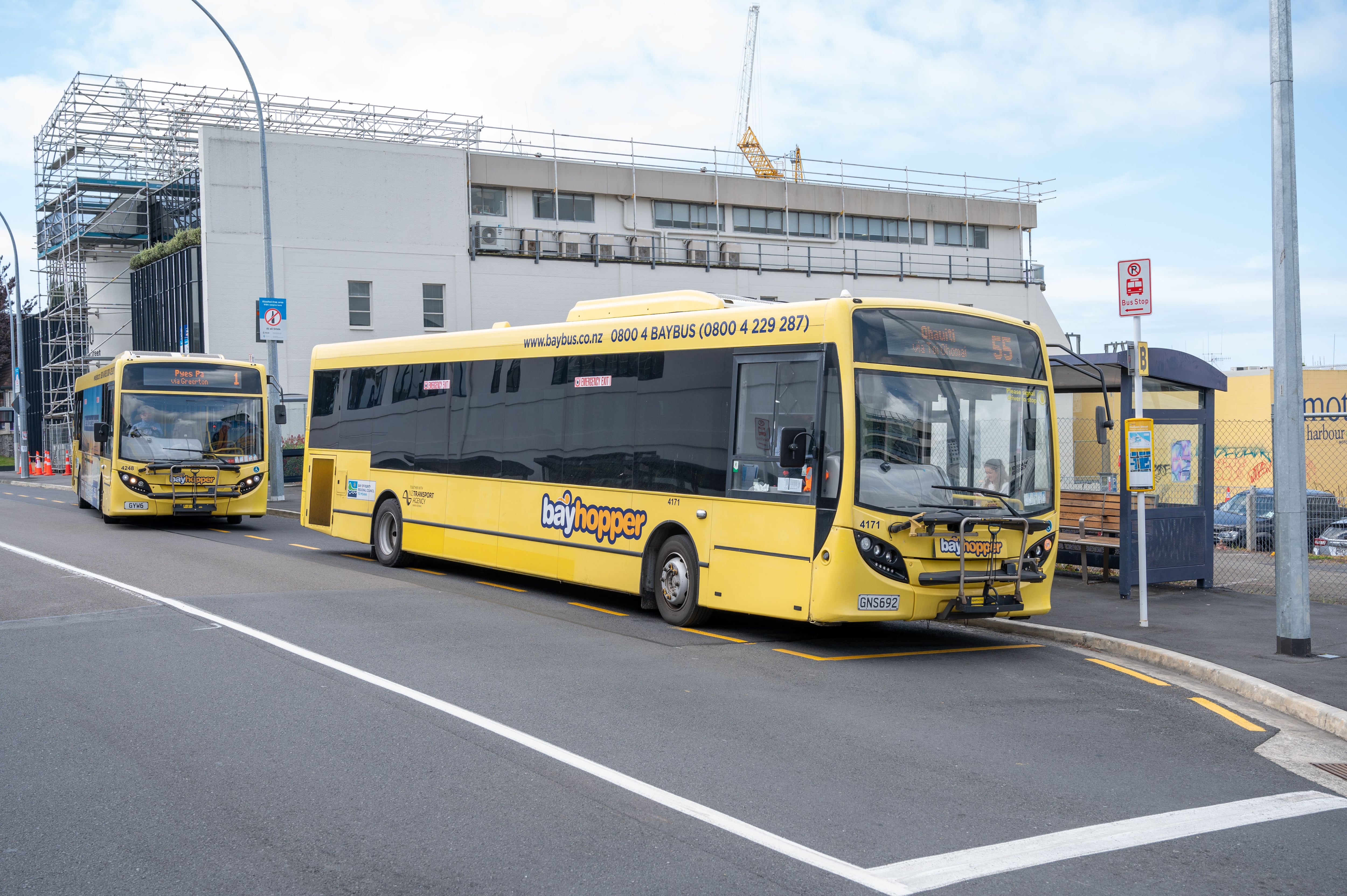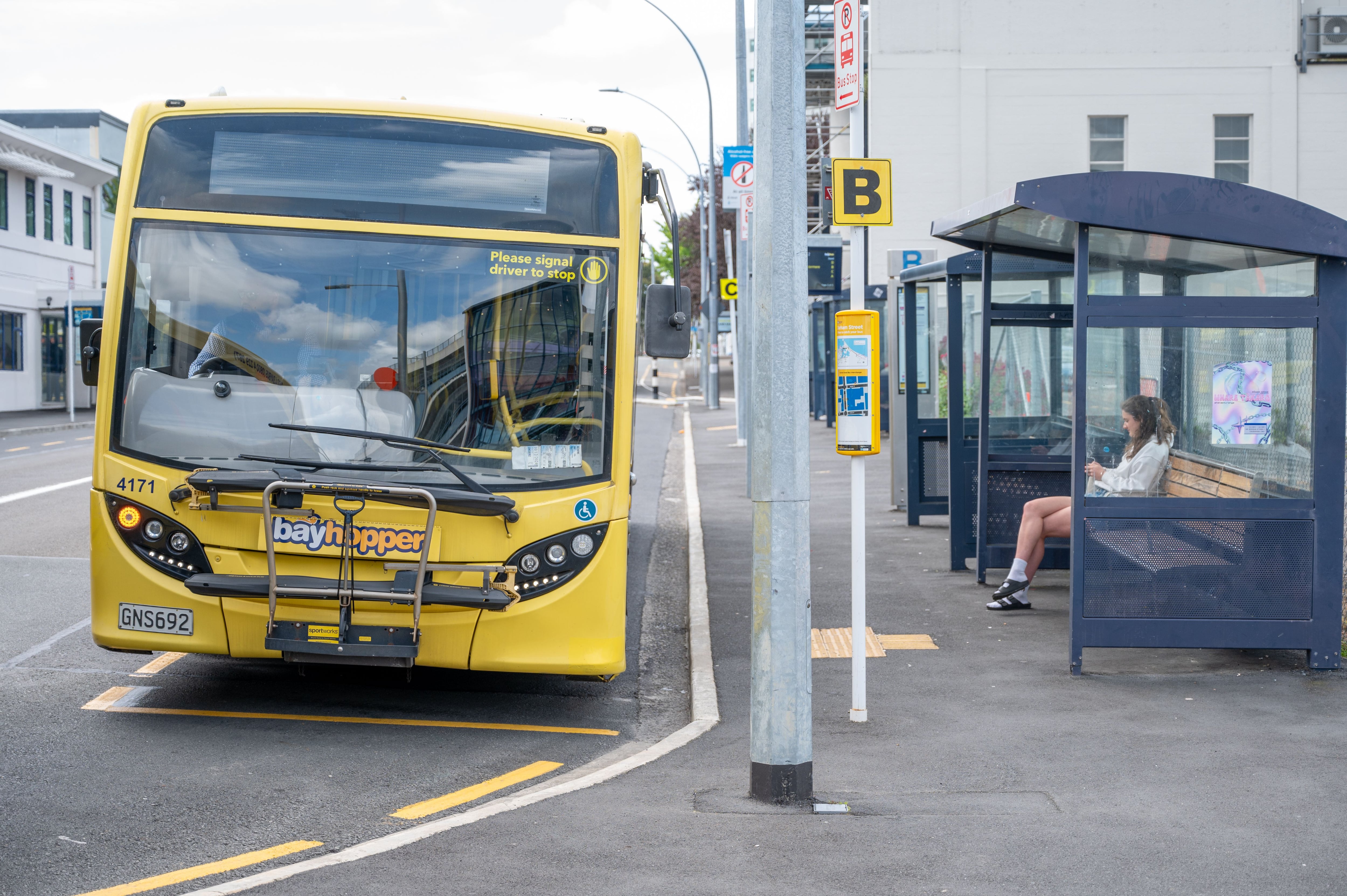Bay of Plenty Regional Council (BOPRC) has launched a comprehensive review of fares to ensure public transport remains accessible, sustainable, and easy to use.
According to a council statement, the review will simplify the fare structure and balance affordability with growing service costs.
“With rapid growth in the region, demand for reliable public transport continues to rise. Meeting this demand requires sustainable funding, which is primarily achieved through Government subsidies, fare revenue, rates, and advertising.
“However, new national expectations require all regions to recover a greater share of costs through fares and third-party revenue to maintain financial stability long-term.”
Public Transport Committee chairman and BOPRC councillor Andrew von Dadelszen said through this review, the regional council aims to develop a simpler, more resilient fare system that balances these financial goals with the needs of the community.
“Our goal is a straightforward, fair, fare structure that serves our growing region.
“By simplifying fares and introducing options for frequent riders, this review will make public transport work better for everyone.”
Key focus areas
Three key focus areas of the review include: rewarding regular riders by introducing options that make public transport an attractive, cost-effective choice for frequent users; improving accessibility by creating a fare structure that is clear, easy to use, and consistent across the region; and working on financial sustainability via ensuring fare structures support the costs of maintaining and expanding a reliable network.
With the regional council asking the public to give feedback on the bus fare review by December 2, the Weekend Sun hit city bus stops to find out what passengers think about BOP buses and fares.

Tauranga bus users Hayes Winn-Tohill and Racheal Williams. Photo: David Hall.
Tauranga residents Racheal Williams and Hayes Winn-Tohill, who were stationed at the Durham St bus stops, take the bus as neither owns a vehicle.
“I have a motorbike and I can’t take her on it,” said Winn-Tohill. The pair live rurally and only take the bus to get into town. They said they would be inclined to take the bus more often if there was better accessibility for rural areas.
Unreliable

Tauranga bus user Neeve Wilson. Photo: David Hall.
Neeve Wilson, who was also waiting for her bus to arrive at Durham St, takes the bus every one to two weeks because she doesn’t have her restricted driver’s licence yet.
When asked why she doesn’t use the buses more often, she said: “They’re pretty unreliable”.
Of the seven people the Sun asked about the city buses, many mentioned how they found them unreliable.
High school friends Jesty and Freya used to take the bus daily. They no longer take the bus as often due to the cost, only making occasional trips to school or sports practices. They said they would be more motivated to take the bus daily if the fares were cheaper.
Tauranga resident Craig Goodwin, who was sitting in his wheelchair at the bus stop, said the city’s public transport was fairly unreliable. “You don’t plan your day around the buses, that’s for sure.”

Tauranga bus user Craig Goodwin. Photo: David Hall.
Accessibility
Goodwin reckoned improved accessibility would make him more motivated to take the bus. “Sometimes the [wheelchair] ramps are stuck, so it takes the driver a while to get them up — so if they improved the ramps, it would be easier.”
Goodwin said electric buses had updated ramps where they have a cord you can pull. “I think they should all be like that.”
One resident, who wished to remain anonymous, was upset about the lack of accessibility.
They use the bus because they can’t afford the cost of a car. The bus user told the Sun they’ve had issues with their therapy dog not being allowed to bring on the bus.
They also said the buses were unreliable to the point they were often left stranded with no way to get home.
They have called for taxis in the past but said they are incredibly expensive and “often they don’t turn up or they’re really late and then I’m late to where I’m going”.

Durham Street bus stops. Photo: David Hall.
Motu Move
BOPRC public transport director Oliver Haycock said the implementation of a new fare structure in the Bay of Plenty would align with the introduction of Motu Move, a national ticketing solution set to roll out nationwide late next year.
Haycock said Motu Move would give customers new flexible payment options nationwide, including use of debit and credit cards and digital wallets such as Apple Pay and Google Pay, as well as prepaid Motu Move cards and tickets, all making it easier than ever to use public transport.
“Aligning with Motu Move gives us the chance to build a system that’s not only straightforward but also future-focussed. We’re committed to making public transport more convenient and user-friendly across the BOP.”
Give feedback!
Haycock encouraged residents to get involved and have their say as part of BPOPRC’s fares review.
“Community input is central to this review’s success. Whether you are a regular commuter or an occasional rider, your insights will help shape a fare system that serves our community effectively. Have your say online now or connect with us at upcoming community events.”
To give your feedback: participate.boprc.govt.nz/fares-review
BOPRC staff will also be available at the Historic Village in Tauranga from 9am-1pm next Friday, November 30, to talk about the review and gather public feedback. The deadline for feedback is December 2. The fares review is expected to be completed by the end of 2024, with any changes rolling out alongside Motu Move later in 2025.



7 comments
Back to front
Posted on 22-11-2024 10:18 | By First Responder
The whole bus system is back to front. It's costing a fortune to run large buses for such small numbers of passengers. Imagine if Air NZ decided to fly triple 7s from Tauranga to Wellington, in the hope that one day the plane would be full. Would be absurd. No different to all these empty buses running around town, destroying the roads (just cost us taxpayers $200,000 to fix Rowesdale Rd) You start small, small buses, then you expand to bigger buses as it becomes justified. Not our bus service. Big and empty, totally back to front.
Useless is right
Posted on 22-11-2024 12:39 | By katikatinudist
Still no bus to the airport ??
:(
Yeah fire BPOP staff
Posted on 22-11-2024 12:44 | By an_alias
Fire all the people who setup this fiasco without actual data on usage. How about you come clean and tell us all capacity usage vs paying people !
At the moment rates are $300 for every house just so we can see an empty bus drive around the streets.
The buses are too big for usage.
The Master
Posted on 22-11-2024 16:38 | By Ian Stevenson
@ First responder
Yes 100%-correct, but you're talking about RBOP who spend Tauranga-Ratepayers-$$ @$320/year added to rates... but it's worse...
The bus fares only pay 6% of all-costs to operate, fare-income is $2.2m of the $40.5m total cost. The balance is paid by:- NZTA(50%), RBOP(42.2% from rates).
For Buses to be "sustainable" means fares need to increase by 16-17 times, assuming no drop in the "pathetic" passenger-numbers now, there will be.
This clearly illustrates how rabidly crazy the RBOP bus services are, to-much, to-many, to-big, to-often and more. Vans, operating around say 7-9am (work and school hours) and 3-6pm is prime-time for user. Some maybe bigger buses, especially where to./from schools-school days only.
It is 100% bonkers to run buses all day and evening when at best 1-2 passengers in a 40+ seater bus.
Hmmm
Posted on 22-11-2024 16:40 | By Let's get real
Yet another change to paying for the bus..? Is that three or four changes now..? And every change requires a new ticketing system, which is charged back to the council at additional cost.
Unless there is a legal requirement for council to operate a loss making transport service, it should be scrapped and disability services should provide mobility funds for those with no other options, to use licensed taxi operators.
The Master
Posted on 22-11-2024 16:51 | By Ian Stevenson
@ an-alias
The post I just put about the $$-side verifies that the passenger numbers are very low. RBOP $$-verify the absolute absurdity of what they are doing and continue to do.
Most buses are running are empty, besides school-start/finish times, at best with 1-2 passengers otherwise. Passenger numbers are "created" "per-sector" basis, one-person travels; from Papamoa>>>TGA-CBD that maybe counted as 4-5? because there are 4-5 stops on the way.
So this isn't clearly disclosed but 100%-fabricates/overstates many times actual passenger-numbers. That is an intentional to self justify spending more.
Yes, roading is damaged by buses, EV buses cost-more, to buy/run/maintain and have lower hours of use due to charging time needed. Add to that, they are a lot heavier than a real bus on diesel etc. this is deliberately done to deceive so self justify the spend and massive rate hikes etc.
Hmmm
Posted on 22-11-2024 20:08 | By Let's get real
All of the current electric buses actually carry fewer passengers, even though they are longer, and they are considerably heavier than the standard diesel buses. Therefore they damage the road surfaces to a much greater level.
The electric buses that have been supplied for our local services are actually unsuitable for the job. They are not used on routes with hills and they are not used on the open road routes because they are limited to around 80kph and are causing traffic delays. Many of the drivers hate driving them because they are top heavy and were it not for special arrangements with NZTA there wouldn't be enough drivers with the appropriate driving license qualifications. These vehicles are rated at class 4 but are being driven by class 2 drivers.
Leave a Comment
You must be logged in to make a comment.